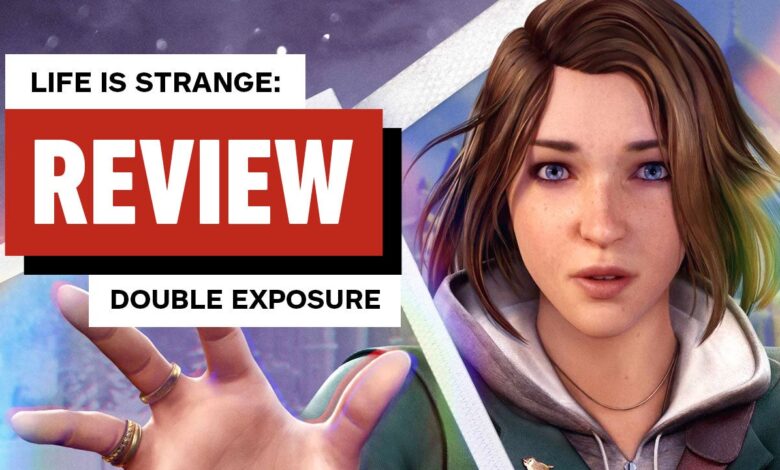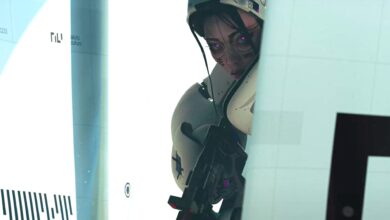Life is Strange: Double Exposure Review

It’s been a long time since I’ve played a game that stuck with me in the way that 2015’s Life is Strange has. Its ability to tell a unique coming-of-age story about a rebellious but often shy teen without coming off preachy or overstaying its welcome was refreshing and had me thinking about it long after I discovered everything I could within the confines of Arcadia Bay. While the series has had a few sequels, prequels, and side stories since, none of them seemed to recapture the magic of those first five episodes for me – until now. Life is Strange: Double Exposure not only lives up to the sky-high standard set by the original but also manages to take it in a fresh new direction and improve on nearly every aspect from the previous games.
It was great to revisit Max Caulfield 10 years after the events of Life is Strange. Even though Max is well into her 20s now, she’s still very much the same character she was the last time we saw her: She’ll overanalyze her surroundings, make awkward jokes to herself, and, most importantly, take way too many pictures. But with her transition to adulthood comes a whole new set of issues she needs to deal with. Instead of worrying about fitting in and trying to impress everyone she met in Blackwell Academy, she’s now a grad student and has to act as an authority figure herself.
Life is Strange: Double Exposure Gameplay Screenshots
There are moments where she’s clearly coming to terms with the fact that she’s no longer young, such as when she questions some of the cringeworthy things she said in the original game or reminisces about when she was an undergrad and had to cram in as much studying and caffeine as possible before finals. It was the little moments like this that stuck with me and really helped make this new chapter in Max’s story even more relatable.
Writing on The Walls
As you’d expect in a Life is Strange game, you’ll need to make some tough decisions. Even though there are only a handful of major choices in each of the five chapters and not all of them will dramatically affect the overall outcome, they do all have consequences because characters will remember how you treat them and act accordingly – to a degree that previous games never managed to nail down. This time, conversations felt like I was talking to an actual person instead of playing a game of guessing the correct answer.
For example, in the first chapter, you are able to ask Amanda, the bartender of a local joint called The Snapping Turtle, out on a date if you play your cards right. On my first playthrough, I did everything I would need to in order to kickstart a romantic relationship with her by learning a handful of awful pick-up lines from other bar patrons. But on my second run, I opted not to ask her out and instead just became friends. While this didn’t necessarily change anything major with the story moving forward, I appreciated that there was a stark difference in how Amanda treated Max if they were dating or were just friends. In addition to romancing people, you can be mean, flirty, or even flat-out ignore someone if you want to. Without diving too heavily into spoiler territory, this is one of the few choose-your-own-adventure-style games I’ve played where I didn’t stress about making the “wrong decision” because every outcome felt natural and worth exploring rather than some being a consolation prize.
Double Exposure’s chapters each take around two or three hours to complete, which makes them shorter than those in some of the other Life is Strange games. This is actually a good thing, though, because I never felt like I was wasting my time dealing with a filler act or meandering around a party just to pad out the runtime. While there are a few plot points that don’t really seem to go anywhere unless you dig through Max’s phone, I never felt like I was missing out on anything too important to the overall story just because I neglected to keep up with my backlog of text messages and social media posts. I like a good epic-scale RPG, too, but the fact that Double Exposure respected my time and told a story that’s tight and concise was refreshing.
That story deals with a number of seriously heavy topics. Everything from divorce to anxiety to the different ways we grieve over the loss of a loved one is covered here in a way that’s so expertly written I never felt like any of these subjects were diminished or sensationalized – they just felt real. It would have been easy for Double Exposure to touch on a sensitive topic and then resolve it with a “thing bad” or “thing good” decision at the end, but instead the writing offers nuanced and appropriate approaches to its situations, many of which I’ve had to deal with in my own life. Seeing a video game character struggle to handle something like the anger and frustration one might feel after someone close to them takes their own life was an unexpected and especially well-executed bit of writing.
What really sells the writing is the incredible performances and animations.
It works so well in part because every character in Double Exposure has their own backstory and is written to feel like an actual human being, faults and all. For example, Reggie, a student at the school where Max teaches, will overshare at times because he sees Max as an authority figure, while Gwen, another teacher at Caledon Univeristy, keeps private details to herself because, like in real life, not everyone immediately tells everybody they meet everything about themselves.
What really sells Double Exposure’s writing and story is its absolutely incredible performances and character animations. While this has always been a highlight of the series, this game has more moments where characters would tell me everything they needed to say without speaking a word thanks to their subtle facial expressions. Say something mean and a character may look at you with disgust for a moment before responding. Pull somebody away from a group and you’ll see other characters briefly look disappointed that you interrupted them. While this isn’t anything new in games, the way in which Double Exposure emphasizes these little touches made me actually care about my actions and how I treated people. Thanks to this attention to detail and directing, Double Exposure’s character interactions are easily the most believable and well-executed I’ve seen in a Life is Strange game.
Reinventing Your Exit
Without getting too heavy into spoiler territory here, Double Exposure’s mystery is one full of twists and turns that definitely kept me guessing until I reached the finale.
The decision to give Max different powers was the correct choice because her original time manipulation abilities just wouldn’t have worked within the story being told here. If she could rewind time with the turn of her palm then the entire mystery could have been solved in a few moments, and that’s just no fun. Instead, those powers have been replaced by a set of interdimensional travel abilities that fit this new tale perfectly. As its title suggests, Max is able to view and travel between two separate realities: one that’s vibrant, warm, and full of life, complete with Christmas decorations and a more upbeat soundtrack, and another that’s miserable, cold, and marked by death. These realities exist in tandem with each other and are, in many ways, polar opposites. Everything from flyers on the walls of the school halls to the music and even how people interact with Max can be wildly different between the dead and living worlds.
I never found myself getting frustrated or lost on a puzzle.
Puzzles this time around greatly benefit from Max’s abilities, too. I never found myself getting frustrated or lost, and I’m happy to say there were never any sections where I had to dodge a train or perform any sort of frustrating quick time events. Her new abilities instead allow for a slower-pace where I needed to use deductive reasoning and explore both realities in order to find a clue or spy on somebody. Need to find something for someone in the living world? It’s probably nearby in the dead world. Need to sneak around an active murder investigation in the dead world? Just hop over to the living world and walk past where the guards are standing, then hop back. It’s not wildly complex stuff, but the way Double Exposure utilizes Max’s powers not only to help you find clues and explore but also to show how the world around you evolves in two separate paths at the same time makes this one of the more interesting uses of a multiverse in gaming.
Double Exposure’s smart use of reality hopping also helps with the story in ways that no other power in Life is Strange has before. For example, someone could be dealing with some trouble in one world that informs how you interact with them in the other. Meanwhile, The Snapping Turtle in the living world is warm, people are conversing with each other, and the music is upbeat and welcoming, but its dead world version has aggressive music, there are fewer people around, and the lighting is cold and uninviting. Because I was able to explore freely and instantly see the differences between both realities, I found myself learning about the worlds, their characters, and the results of my actions in a more meaningful way rather than just searching for exposition dumps and waiting for text messages.
Nick’s Tough Choices Playlist
These are all games that require you to make tough choices.
Caledon University itself is an idealistic-looking Northeastern college campus. The buildings are old and covered in a layer of snow and student art, and the cinematography when you take a moment to reflect on a park bench or overlook shows off how beautiful this location is. Unfortunately, it’s also a bit smaller than the areas from the other Life is Strange Games, and while it would have been nice to explore a larger world outside of the few accessible locations on campus, Max’s house, and The Snapping Turtle, every area in Double Exposure is pretty densely packed with things to interact with and explore.
They are also bolstered by composer Tessa Rose Jackson with some of the best original music I’ve heard in a video game all year. The soundtrack not only perfectly captures the emotions of each scene but also helps to amplify the tone of the world, making it feel even more alive or dead, depending on which reality you’re in. The same can be said about the color grading and cinematography. The series is known for its cinematic look, and Double Exposure is no exception thanks to its rich color palette and smart camera work. Vista shots, snap zooms, and following focus on characters are all artfully executed in a way that would feel at home in a feature film.



